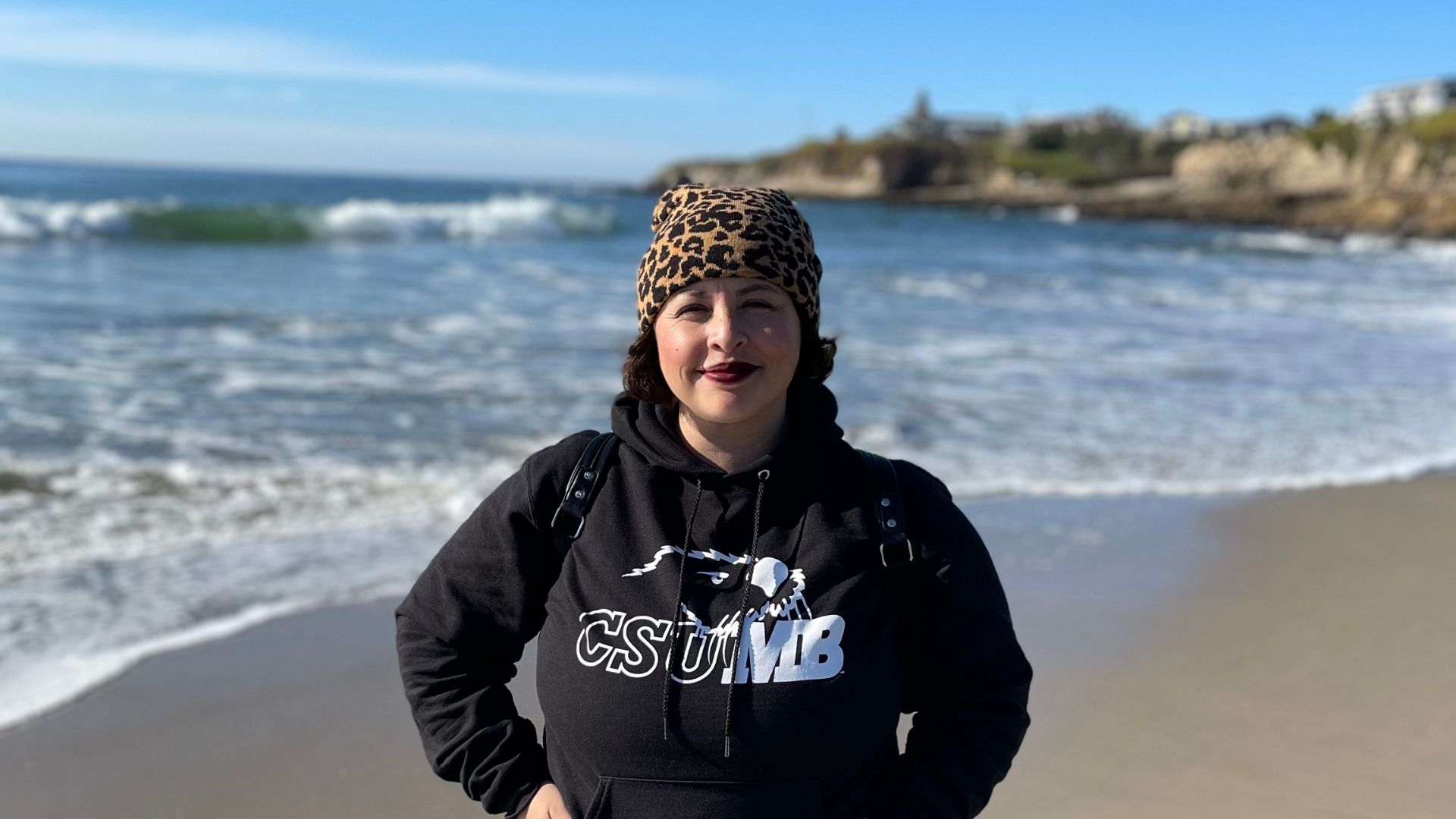Immigrant Heritage Month: Undocumented student faces uncertain future

Anaiz Ruiz is an undocumented student in agricultural plant and soil science.
June 20, 2023
By Mark Muckenfuss
Anaiz Ruiz lives in limbo.
It’s a no-man’s land where she doesn’t feel part of the country she was born in, but where the only home she has ever known does not recognize her right to live there.
Ruiz, 35, is going into her senior year at CSU Monterey Bay as a plant pathology and soil science major. What she will do when she graduates, she’s not sure. The options for an undocumented student are limited. As part of Immigrant Heritage Month, her story is being spotlighted as one that represents a segment of society left standing outside of the gates of opportunity.
“It’s like, what am I going to do with my degree?” she said, speaking from her home in San Bernardino, where she is spending the summer cleaning houses. “The options are pretty much to continue in education or start my own business.”
Born in Guadalajara, Mexico, Ruiz was just 9 months old when her mother, then 16, crossed the border in 1989. She has spent her life living mostly in the shadows.
“We knew we had to keep a low profile,” she said. “But I didn’t really know what it meant to be undocumented until I was 16 or 17 and I was thinking of going to college. I found out I wasn’t like everybody else. I couldn’t get a driver license. I couldn’t apply for college.
“After watching my parents work in warehouses, cleaning, watching them break their bodies and say to me, ‘Get an education,’ it was really heartbreaking to want more and not be given the opportunity to try to reach it.”
She applied for the DACA program but didn’t have adequate records to get approved. For several years after graduating high school, she worked as a house cleaner, unaware that state policy had changed in 2011 to allow undocumented students to qualify for state-funded aid, such as the Community College Board of Governors’ waiver. She enrolled at Chaffey College in Rancho Cucamonga in 2014. Because she needed to work to support herself, she was only able to attend school part time, she said. She transferred to CSUMB in 2022.
“I wanted to get out of San Bernardino,” she said, adding that she was attracted by the strong science program. “I’d like to be a researcher, preferably in entomology or plant pathology. I’d like to be a professor promoting STEM (science, technology, engineering and mathematics).”
She appreciates that her studies have had a practical element, allowing her to do field work outside of the classroom.
“It was really eye-opening, getting out there and seeing the agricultural workers and how far a college education can go in making things possible for undocumented people,” she said.
Even if that path is limited. Right now, she said, pursuing an advanced degree seems her most viable option, and she is researching graduate programs. But the cost is daunting.
“I have to think about finances,” she said. “I do have access to private loans. I feel like it’s something that’s attainable, but it’s something that’s going to take every bit of my will to get there. I have to make it. If not, what was the point in my parents coming here?”
She said she feels fortunate to have the support of her fiance and his family, with whom she’s staying for the summer. The money she makes from cleaning homes, she said, “will be enough for me to scrape by, with help from programs like Basic Needs.”
Her fiance is a U.S. citizen, and she recognizes getting married would be a potential path to establishing residency. But even that is complicated and could require her to leave the country for 10 years.
“I’m not rushing to the alter right now,” she said.
Whatever the future holds, she feels she can handle it.
“I’ll just keep going,” she said. “I’ve had plenty of doors shut in my face. What’s a few more?
“It’s definitely been tough. But it’s built a resilience in me in spite of the obstacles I faced to come and get an education.”
For undocumented students such as herself, she said, “It would be nice to find opportunities post-college to put our educations and our brains to use. The more we keep pushing for that, the more we are going to be able to diversify the education system.”
Until that happens, she said, “I may have to find something else and maybe even keep cleaning houses in the meantime.”
Editor’s Note: This story is one of a series recognizing Immigrant Heritage Month.